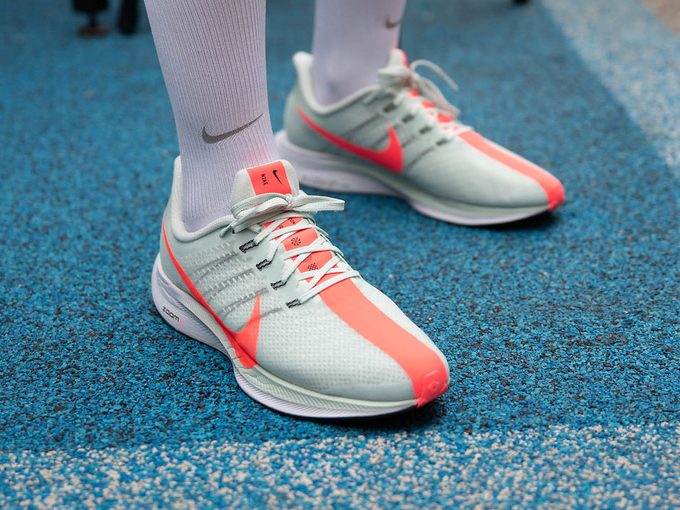The Worst Part About Marathon Training, IMO
It's a necessary evil.

The worst part about marathon training, in my opinion, is not the long distance runs I’m doing every weekend, it’s the weekly speed work. I’d rather run 12 km at a comfortable pace than do 6 km worth of speed work. I know, I know. If I’m ever going to become a faster runner, I have to work on speed training. (Plus, it would be nice to get this marathon over with as fast as possible!) I’ve tried to embrace speed work a little more leading up to Chicago Marathon and doing these workouts as part of a group with Nike Run Coach Britt Moran has been a big help. As I mentioned in my previous post, I’ve been meeting weekly with Coach Britt and a few other women to train. Sometimes we’ve hit the road on a quick 5 km run but for the most part we’ve been doing speed work at a track. (I use the Apple Watch Series 4 to track my pace.) Below you’ll find a little glossary for some common run terms as well as a look at two speed workout examples.
Speed Work Glossary
Tempo is a hard but controlled pace that can be run as long intervals or a steady run of 1-10 miles. The purpose of a Tempo Run is to build mental and physical endurance and to become comfortable with being uncomfortable.
Track refers to a session that includes a series of speed intervals. Ideally, this type of a workout is done on a track as the surface allows you to play with faster paces with precise measurements, but it can be done just about anywhere. You may choose to use city blocks, traffic lights or even trees as interval markers.
Fartleks work on speed and strength by alternating distances and paces during a continuous run. An example Fartlek workout structure could be one minute running easy followed by one minute running hard, repeated for a certain amount of minutes, miles or alternating every city block.
Split Intervals refers to running two different paces in one interval. For example, running a 400-meter interval, with the first 200 meters easy and the last 200 meters fast. This effectively divides the interval into two parts.
Hill workouts develop speed and form. It takes extra effort to run uphill so you do not need to run as fast as you would on a flat section. While running uphill, remain in control of your breathing. Don’t lean too far forward. A light lean with the chin leading the chest is enough. Uphills are a great way to develop speed and strength with minimal pounding on the legs. (Tip: Coach Britt told me Hills are a sneaky way to trick yourself into doing speed work. If you’re like me and loathe speed training, adding a few hills into your run to mix it up.)
9K Tempo Workout:
1-2K Warm Up
2 x 3K at Tempo with 1:30 recovery in between (For me, this means I would be aiming to maintain an average pace of 6:30 min/km.)
1K Cool Down
9K Speed Workout:
1K Warm Up
8 x 800 m with 1:30 recovery in between (This calls for two laps of the track at a pace of 5:60, followed by a 1 minute 30 second rest. Repeat 8x.)
1K Cool Down
For a more in-depth program you can check out the Nike Chicago Marathon Training Plan or download one of the speed runs in the Nike Run Club app (These can be found under Guided Runs). Plus, don’t forget to record your runs.
Next, watch for a roundup of the gear I’ve been using throughout my training. (Pictured above is the Nike Zoom Pegasus Turbo, $180; nike.com)




